Chris Baty's Blog, page 42
February 1, 2021
Celebrating Stories During Black History Month

February is Black History Month! Of course, history isn’t just something that happened a long time ago, it’s what we create every day. Today, NaNoWriMo Community Manager Chanda Briggs is here to talk about celebrating Black creativity:
I have been with NaNoWriMo for almost two years now, as the Community Manager. In that time, I can honestly say I have enjoyed the most growth, trust, and the most ability to apply my range of skills and passions than I have in the whole of my adulthood. As a Black woman, I can’t tell you how elusive that experience can be. There is certainly no shortage of talent among Black people, and if nothing else, 2020 was a year in which so much of this talent was showcased.
When I was young, I was a passionate poet. I wrote with a feverish abandon that seems to be rarer as I get older, but I was hesitant to share my work with anyone, lest the words so lovingly scribbled from the depths of my soul be considered unworthy by a reader. It took quite a bit of encouragement from a mentor of mine to allow him to read them, and he was the first person to tell me I was a good writer. That simple validation changed my life, so I know the importance of encouragement and even more so, of community support. This is what I love most about NaNoWriMo and the work we do.
When we feel free to write, no matter what type of writing it is, we are telling a story about ourselves: our interests, our ability to analyze and catalyze ideas, our hopes, dreams, fears, and aspirations. For BIPOC, it is all-too-common for the overarching societal narrative to be that our ideas, perspectives, and stories are unimportant, and have no place in the broader narrative of our world. For a long time, it was believed that there was no audience for these either. Both of these are simply untrue.
I admit that I wanted to write for the NaNoWriMo blog for quite some time, but I wasn’t sure what I wanted to say and when I wanted to say it. Black History Month just felt right. Traditionally, this is a time when we highlight and reflect on the contributions of our community. This is an important and ongoing pursuit. However, it occurs to me that at this moment in time, we are making history as well. There is no time like the present to catalog our experiences, express ourselves, and add to the rich canon of literary work.
Full disclosure: NaNoWriMo doesn’t have a very large Black community. We are aware of this and have been making strides to change this, but we are not divorced from the broader societal issues that contribute to this fact. It has been my privilege to speak to some of the challenges and hindrances to Black creativity that we aim to address in our programming and strategic plans. I am proud of the work we have started and fired up for all that is left to do. Ultimately, my wish is that anyone who feels excluded from the experience of writing with the support and resources that our current community enjoys, feels welcome, wanted, and valued.
It is easy to feel overwhelmed or feel like an imposter when you aren’t sure of your value, but I am here to tell you that you do have value. Your story has value. The work you do, no matter how it manifests itself, has value. We want you to write that novel. We want to read them too! What we do now will become the stories our descendants tell their children. We are future ancestors. So, I encourage you to not just learn Black history but acknowledge that you are Black history.
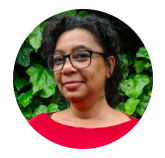
Chanda Briggs loves community and relationship building with the NaNoWriMo audience. She’s currently working towards her master’s degree in library sciences, and her poems have been published in a Swedish zine (as well as other platforms)—but she loves writing anything from dystopian sci-fi to thoughts on current affairs, and actually enjoys college essays. She has a passion for Nordic entertainment and thinks that research is by far the most challenging but rewarding part of her literary journey.
January 29, 2021
Submit Your Novel to Pitchapalooza!
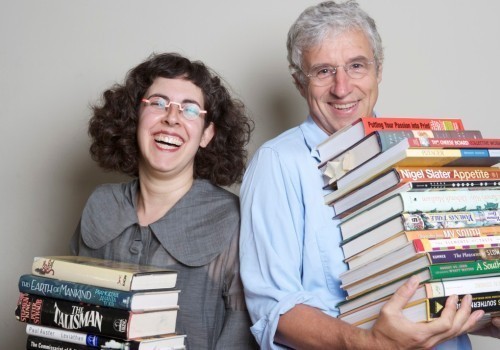
Ready to pitch your novel to the pros? Here’s a message from The Book Doctors to tell you how!
You wrote your 50,000 words (or close!). You’re a winner. You felt the high. Now what are you going to do with your precious manuscript? That’s where we, The Book Doctors, come in.
For those of you unfamiliar with Pitchapalooza, here’s the skinny: You get 250 words to pitch your book. Twenty pitches will be randomly selected from all submissions. We will then critique the pitches during a live webinar on March 13, 12PM PT, so you get to see what makes a great pitch. At the end of the webinar, we will choose one winner from the group.
The winner will receive an introduction to an agent or publisher appropriate for his/her manuscript.
Beginning February 1, 2021, you can email your pitch to nanowrimo@thebookdoctors.com. PLEASE DO NOT ATTACH YOUR PITCH, JUST EMBED IT IN THE EMAIL. Include your title and your name at the top of your pitch. All pitches must be received by 11:59PM PT on February 28, 2021.
We will also crown a Fan Favorite who will receive a free one-hour consult with us (worth $250). On March 14, 2021, the 20 random pitches will be posted on our website, www.thebookdoctors.com. Anyone can vote for a fan favorite, so get your social media engine running as soon as the pitches go up! Connecting with your future readers is a vital part of being a successfully published author, and this is a great way to get some practice. Voting closes at 11:59PM PT on March 31, 2021. Fan Favorite will be announced on April 1, 2021.
NaNoWriMo Pitchapalooza Success StoriesIt’s been a great year for past NaNoWriMo Pitchapalooza winners. Gloria Chao won the 2015 NaNoWriMo Pitchapalooza with the novel that would become her critically-acclaimed debut American Panda. Her second novel, Our Wayward Fate, came out in 2019 and her third novel, Rent a Boyfriend, is out now from Simon & Schuster Books for Young Readers.
In 2016, May Cobb ran away with NaNoWriMo Pitchapalooza. She’s been capturing attention ever since. This time it was a “heated six-publisher auction” that ended with Berkley winning the rights to publish her latest thriller The Hunting Wives, which was pitched as In a Dark, Dark Wood meets Mean Girls. Berkley plans its release for May 18, 2021.
Stacy McAnulty has been on fire since she won our third NaNoWriMo Pitchapalooza, publishing twenty-five books and counting. Her latest novel, Millionaires for the Month, is out now from Random House Books for Young Readers. Kirkus calls it “cinematic, over-the-top decadence, a tense race against time, and lessons on what’s truly valuable.” Stacy also signed a deal with Random House to publish another middle grade novel, A Penny Doubled, pitched as How to Steal a Dog meets Brewster’s Millions. Look for it in spring of this year. She’ll also publish three picture books in 2021: A Small Kindness (February 2), Mars! (February 9), and Brains! Not Just a Zombie Snack (August 31).
IMPORTANT NANOWRIMO PITCHAPALOOZA DATES
“Winning Pitchapalooza gave me confidence and the courage to keep fighting. It also helped bring my manuscript to the next level.”
–Gloria Chao
Monday, February 1, 2021: Pitch submission opens
Sunday, February 28, 2021: Final day to submit pitches
Saturday, March 13, 2021: NaNoWriMo Pitchapalooza live on YouTube
Sunday, March 14, 2021: Voting for Fan Favorite begins at www.thebookdoctors.com
Wednesday, March 31, 2021: Final day to vote for Fan Favorite
Thursday, April 1, 2021: Fan Favorite announced at www.thebookdoctors.com
NANOWRIMO PITCHAPALOOZA FAQSQ: May I submit more than one pitch?
A: Yes, you may submit multiple pitches. Please include your book’s title and your name at the top of each pitch.
Q: How are the 20 pitches selected?
A: The 20 pitches are randomly selected; however, we read all the pitches.
Q: Are the choices for Fan Favorite also randomly selected?
A: Yes. They are the same 20 pitches that we read during the webinar.
Q: Will a recording be available?
A: Yes. You’ll be able to view the recording at our website.
Q: Where can I learn more about writing my pitch?
A: We offer resources on our YouTube channel. We recommend that you watch “The Art of the Book Pitch”, last year’s NaNoWriMo Pitchapalooza, and our Pitch Tips playlist. Hungry for more examples? Check out our Pitchapalooza playlist. You can find Gloria Chao’s pitch tips here.
Are you feeling a little unsure about exactly how to craft your pitch? We’ve got you covered.
10 TIPS FOR PITCHING YOUR NOVELA great pitch is like a poem. Every word counts.Make us fall in love with your hero. Whether you’re writing a novel or memoir, you have to make us root for your flawed but lovable hero.Make us hate your villain. Show us someone unique and dastardly whom we can’t wait to hiss at.Just because your kids love to hear your story at bedtime doesn’t mean you’re automatically qualified to get a publishing deal. So make sure not to include this information in your pitch.If you have any particular expertise that relates to your novel, tell us. Establishing your credentials will help us trust you.Your pitch is your audition to show us what a brilliant writer you are, so it has to be the very best of your writing.Don’t make your pitch a book report. Make it sing and soar and amaze.A pitch is like a movie trailer. You start with an incredibly exciting/funny/sexy/romantic/etc. close-up with intense specificity, then you pull back to show the big picture and tell us the themes and broad strokes that build to a climax.Leave us with a cliffhanger. The ideal reaction to a pitch is, “Oh my God, what happens next?”Show us what’s unique, exciting, valuable, awesome, unexpected, about your project, and why it’s comfortable, familiar and proven.Join our newsletter to receive more tips on how to get published.
Arielle Eckstut and David Henry Sterry have appeared everywhere from NPR’s Morning Edition to The New York Times to The Wall Street Journal to USA Today. They have taught everywhere from Stanford University to the Miami Book Festival to the granddaddy of American bookstores, Strand Books in New York City.
Their book, The Essential Guide to Getting Your Book Published , is the go-to book on the subject, and contains all the information you’ll ever need, taking you through the entire process of conceiving, writing, selling, marketing and promoting your book.
January 27, 2021
4 Tips on Completing a First Draft as a Young Writer
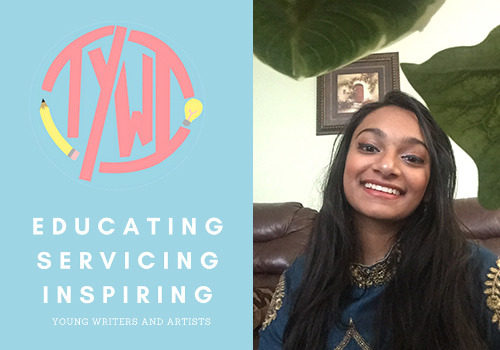
Completing a first draft is always full of challenges, but it can be especially daunting for a young writer tackling it for the first time! Today, Riya M. Cyriac, the Executive Director of The Young Writers Initiative, is here with a few tips to help young writers finish their first draft:
Packed with school, work, extracurriculars, and the impending doom of adolescence, young writers seem busy enough. Nevertheless, as The Executive Director of The Young Writers Initiative, I’ve seen so many amazing young writers submit their full manuscripts to our services, and others struggle to finish their first drafts. So what’s the secret? Here are 4 of my best tips on completing a first draft as a young writer.
1. Decide whether you count progress based on word counts vs. chapter counts.For some people, setting daily goals based on word counts is their tried-and-true method to get words on the page. For others, that may not have the same effect. Whenever I face a milestone roadblock, I set goals based on chapters instead of word count. For me, writing a full chapter is longer than writing 1677 words. When I set a goal that is content based rather than numerically based, I feel more propelled to complete that chapter in one or two sittings. When I write with this thinking in the back of my mind, I’m able to get into the zone instead of obsessively checking to see if I’ve met my wordcount quota for the day. Evidently, my writing becomes more story driven, and I write more words. My enthusiasm is heightened and I’m able to get deeper into my workflow because I’m starting and stopping at a very natural place. Both methods have their pros and cons, so find which one helps you get in the zone.
2. Outline in chunks, not in full.When I outlined my most recent novel-in-progress, I didn’t sit down and outline all 67 chapters at once. That was too daunting and inflexible to me, especially because I knew that I would probably change a crucial plot point or two that would drastically change the outline. Instead, I outlined my novel in chunks.
A chunked outline is when you break your story into parts and outline it chunk at a time. You outline part 1 first, then write that part. Depending on where the story is after part I, outline part II, write, and continue the process. In my experience, this makes my outline far more useful. As a young person, I have no idea how much my writing will grow, so I want my storytelling skills to grow with me.
3. Make yourself fanfiction/fan art.Young writers ooze with creative energy, but we also need to learn how to harness that. If your book is starting to bore you, take a break from the conventional plot and write a scene you are super excited about, like the final battle or the love confession. The unfortunate drudgery of the middle is often where unfinished first drafts come to their end. You don’t have to write chronologically, so feel free to jump around. If you’re staunchly against that, write a scene that won’t appear in your book, like a pre-preface or alternative universe. When you do this, you’re getting your creativity flowing again, thus fighting off the boredom bug. You can also create moodboards, playlists, character sketches, and other creative outlets that get you back to loving your book.
4. Find a strong community (like The Young Writers Initiative!).Writing is often penned as a solitary art, but it doesn’t have to be! There are tens of thousands of young writers on Instagram, twitter, and other platforms that face the same struggles that you do, whether it be finishing a draft, publishing their work, or learning more about writing.
At The Young Writers Initiative, we aspire to educate, service, and inspire young writers. We get the struggles of taking on the writing and publishing world while being young, especially the financial and educational barriers. We offer free editing, beta reading, cover designing, book reviewing, and consulting to writers 25 or below. We also publish a quarterly literary magazine, Juven, publish anthologies, host contests, a summer camp, mentorship, workshops, and several events. If you’re looking for a community of writers, join our discord! There are so many opportunities out there that will support your endeavors as a budding novelist. You got this!
If you’re interested in The Young Writers Initiative, visit our website tywi.org and follow us on Twitter, Instagram, and Facebook @tywiorg.

Riya M. Cyriac is the Executive Director of The Young Writers Initiative. She is a 17-year-old budding novelist and poet. Her fiction has been published in a variety of literary magazines, like the Lumiere Review and Anser Journal. She is currently working on the third draft of her novel.
January 25, 2021
NaNoWriMo Editing 101
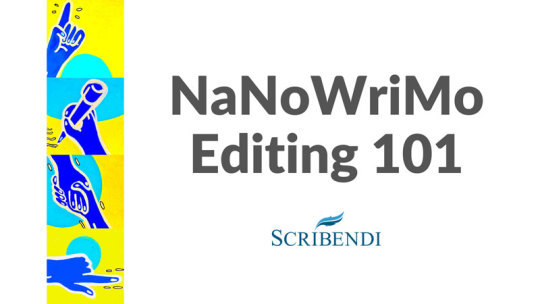
During our “Now What?” Months, we’re focusing on providing resources and information to help writers through the revision, editing, and publishing process. Today, Jes D.A., senior editor at Scribendi, a NaNoWriMo sponsor, is here to share some basic editing tips:
Before becoming a senior editor at Scribendi, an online editing and proofreading company headquartered in my hometown, and after completing my first ever NaNoWriMo, I faced a mess of a draft. As I reviewed my work, I was horrified. It was easy enough to give up on the story—and almost NaNoWriMo itself—forever.
This is not a unique situation. Many writers end up frustrated with their drafts (or themselves) after NaNoWriMo, forgetting, after prioritizing writing during November, that the editing stage is just as important as the drafting stage. As noted by Squibler, “Thorough and extensive editing is essential to any novel that makes it to the end of the publishing process.”
When I wanted to quit, I had forgotten that NaNoWriMo was only the first step of my journey—that oh-so-important, and arguably most difficult, first step that helps so many writers embark on the stages of writing. But it is far from the only step in the writing journey.
Learned writers know that editing is integral to the writing process. They only allow editing to become a secondary goal to win NaNoWriMo because they know that polishing their writing is a requirement for later. In accepting that quality should always be improved, your imperfect writing can never cause fear. Instead, it feels natural.
As it should. As a professional editor and writer for over five years, I have never seen a manuscript that couldn’t be massively improved upon. This is not a reflection of the quality of writing but rather shows just how powerful editing is. And how necessary it is.
Still, NaNoWriMo editing can be a daunting journey, what with so many words to improve, and especially after the considerable effort it took to write them in the first place. For that reason (and more to come), it is an excellent idea to …
Wait to Edit
It’s a great idea to wait between the writing and editing stages. A long break is essential to ensuring you can read your manuscript anew, which is required for effective editing.
Some fear forgetting their work or its outline, for example, but revising as the writer will be much less helpful for your book than revising from the perspective of an outside editor. Fresh eyes are needed for a real evaluation of the quality of your work and the aspects of it that require improvement.
Stephen King, in On Writing, argues that you should let your manuscript sit for at least six weeks before beginning to edit it. For NaNoWriMo participants, this means you should wait until at least mid-January to begin revising your draft. I might argue that the end of February would provide an even fresher perspective. This will give you time for a true break in December and time to plan how you will tackle the editing phase of your NaNoWriMo journey. That means you will also need to …
Set Editing Guidelines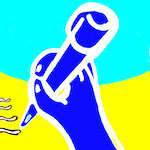
Since you are facing such a large draft to edit, it is a good idea to lay out a plan for your NaNoWriMo editing as you likely did for your NaNoWriMo writing. Even if you are a pantser, you had a daily word count goal of 1,667 words per day and the general outline used for all stories (beginning, middle, and end). Plans help to simplify any process, and an editing plan will certainly make the task less daunting.
At one time, NaNoEdMo was created to help writers through this editing process; the event traditionally occurred in March and specified 50 hours of editing time over the month. Choosing a similar goal or a word count-based goal, as you likely did with NaNoWriMo, is an excellent idea. And, as you may know as a NaNoWriMo participant, staying on track can mean the difference between a workable piece and a draft left finished and forgotten forever.
Don’t let your manuscript collect dust for too long. Once you have had a proper break and set a schedule, you should get editing. If you’re not sure where to start, it’s time to …
Get Editing Help
Editing can feel like a huge undertaking, especially for larger works. Not knowing where to start is not uncommon, as is true when learning any professional skill. But right here at your NaNoWriMo home, you can find lots of help if you’re not sure what to do after finishing your first draft. NaNoWriMo HQ provides “Now What?” resources, forums, and webcasts with advice on both editing and publishing. In addition, NaNoWriMo participants can swap novels for feedback or editing, join writing groups, and seek publishing and self-publishing advice in various NaNoWriMo forums.
There are also many online guidelines for novel editing. Scribendi’s author blog, for example, outlines advice from experienced fiction editors and writers at Scribendi. For NaNoWriMo editing participants, “NaNoWriMo: Now What?” provides advice on how to actually begin editing your writing, while “Navigating the Publishing Process: A Guide for New Authors” is a helpful resource for when you’re finished editing.
Another way many novelists seek help is by having a professional editor revise their first draft on their behalf. This is a good option for novelists who would like to obtain professional feedback before continuing with the writing process. It is also helpful for writers who simply do not enjoy editing and those who want to begin working on their next story while their current story is being edited.
If you’re unsure if external editing would be beneficial for you, a few companies offer a free sample edit. This year, as a NaNoWriMo sponsor, Scribendi offered NaNoWriMo participants a free sample of 2,000 words of editing for their NaNoWriMo novel. If you participated this past year and would like to try editing for yourself, check out Scribendi’s NaNoWriMo free sample.
Onward!
A rough draft is called rough for a reason. It is more than natural for your winning NaNoWriMo manuscript to be a not-so-winning manuscript if you submit it before it is ready.
All novels require editing, and, though it might not always feel like it when the time for editing comes, a bad first draft is a wonderful starting place for writers. Giving yourself a true break and some breathing room away from your novel, setting guidelines for when it comes time to edit, and getting editing help can alleviate this common stress for writers and help them achieve a successful edit.
After all, NaNoWriMo editing can mean the difference between getting published and not, and your story deserves to be shared.

Jes D.A. is a Senior Editor and the Content Marketing Coordinator at Scribendi. She graduated from Western University with an Honors Specialization in Creative Writing and English Language and Literature. Her writing advice has been published on several writing blogs, including Writer’s Digest, and her creative and academic writing has been published in magazines. Jes is also infatuated with the visual arts, and her artwork has been featured in several zines.
January 22, 2021
Battling the Blank Page

No matter where you are in your writing journey, sometimes your inspirations just dries up. There are many ways to confront that blank page, and here are a few nuggets of advice from YWP Participant Aamukta Thalluri:
Ye Accursed writer’s blocke!
(…was what Shakespeare thought when he couldn’t figure out what should happen next in Othello.)
A blank page. A blinking insertion point. A frustrated writer. This is a tale as old as time (only replace the insertion point with a pen/quill). We’ve all been here at some point, wishing words could magically appear on the paper. Now, I can’t say for sure that Shakespeare thought exactly those words. But as a writer who churned out plays at a remarkable pace, it stands to reason that he too had days when he’d sit in front of a scroll, his mind blank, ink dripping from the quill, the only blotch on an otherwise unblemished paper.
As a writer, I’ve been in the exact same situation, almost too many times to count. And now, I’ll be sharing some tips that have helped me get past writer’s block.
Before I start, a bit of advice. I learnt this at a writing workshop, and have come to realize that this is the case, more often than not: If you haven’t yet tried to write something, it’s not writer’s block. There’s a difference between daydreaming about the book you want to write and being unable to capture the words when you sit down to do it.
Tips to overcome writer’s block:For short-term projects, specifically NaNo drafting or writing projects with a deadline:
Take a hike! Or a walk. Commune with nature. Observe people. Take deep breaths. Oftentimes, writer’s block happens because of stress. So give yourself some quality time and let the tension disperse.Distractions. Watch engaging TV, read a good book, play an instrument, cook, bake…. Do whatever gets your mind off your draft, and get back to it with a clear head.Work on a different part of your story. Now, you’ve probably heard this before, or even tried it out, but this works! NaNo is about churning out 1667 words a day, not 1667 words written in the exact same order they’ll appear in the final draft. So just let go of a troublesome scene, and get back to it whenever you feel like it.For long-term projects, which don’t demand a daily word count or have a deadline:
Put it aside. This is probably the best thing you could do. Keep the unfinished manuscript aside, whether for a few days, weeks, or months. You could be on a long boring car ride or in a really boring talk when inspiration suddenly strikes. Eureka! Now go back and finish what you started.Work on something else. Get to that poem you’ve always wanted to write. Or the short story that you’ve unconsciously been collecting details for. Or just a whimsical fanfic. In the process of doing this, you might find inspiration.Different scenarios. This is something that works for me every time. If you’re stuck at a particular scene, and you have no idea what to do next, write the most incredible, the wildest thing you can imagine would happen.For example, say I was writing, “Jack and Jill went up the hill / To fetch a pail of water.”
And I’m stuck. No idea what comes next. So this is what I do.
Scenario 1:
Jack and Jill went up the hill / To fetch a pail of water. / What Jack didn’t know / Was that Jill was a trained assassin / And he was the next target.
Scenario 2.
Jack and Jill went up the hill / To fetch a pail of water./ Only pail of water here / Was code word for / Joining a cult.
In the process of doing this, I generally realize the most realistic course of action the story should take.
If you’re stuck in your writing, I hope this advice helps you out!

Aamukta is a writer, poetess, guitarist, amateur blogger, and a part-time teenager. She spends a lot of her time writing or thinking about writing, hers, or other people’s. Her tastes are as weird as they are varied. Her favorite writers range from Louisa May Alcott to Stephen King to Pseudonymous Bosch. She recently began working on her masterpiece, Mage Academy, a YA novel with superheroes, and mythological elements. (Did warn you that she’s weird!) In her free time, she binges on a variety of TV series such as Psyche, Supernatural The Walking Dead, Once Upon A Time, Seinfeld, Brooklyn Nine-Nine… And the list goes on.
Top photo by Henry Hustava on Unsplash
January 20, 2021
Writing Questions to Ask Yourself as You Edit

Everyone has something that motivates them to keep going, keep tapping away on that keyboard or scribbling in that journal. And hearing what inspires others is a great motivator, so here are some of the reasons why NaNo Participant Sarah C. keeps coming back to her writing:
Questions always come up when I’m writing. Who is this character? What do they want? Look like? How do they grow and how do I show that change happen in them? I’ve used the words “shrugged” and “sighed” how many times?
One of the questions, inevitably, is “Why am I even doing this?” Sometimes it’s a relatively cheery moment of self reflection: Why do I write? What is it that drives me to write? But at some point, usually around the halfway mark, I hit that place where I stare in horror at what I’ve written—characters that don’t sound like they did in my head, characters who are doing things I didn’t actually want them to do, prose that reads more like a confused instruction manual, that same question becomes a little more panicked, and more than a tad gloomy. “Oh no…what have I done? Why am I even doing this?”
I’ve always wanted to write. I wrote all the time when I was a kid and a teenager. Stories, poems, plays…Then, at some point, I just stopped, without really noticing I’d stopped. I let go of it, thinking of it as something I’d get back to eventually. Years went by and I still kept thinking, “eventually."
“I love to ask questions as I write, and I love the new and sometimes odd questions that writing itself generates.”My first year trying NaNoWriMo brought me back to writing, and I haven’t been able to stop since. Even when it feels impossible, I can’t let go of the characters I have in my head, or the settings, or the idea that I could try to create something that feels close enough to how I imagined it in my daydreams.
And, I think a lot of it comes back to questions. I love to ask questions as I write, and I love the new and sometimes odd questions that writing itself generates. One of my current works in progress is historical fiction, which has me doing research on things I would never have thought to do research on. And beyond that, the deeper questions about the characters themselves. Who are they, really? How can I make them feel more real? Where can I add layers, how can I make them more complex? And how in the world do I translate that to the page?
It can be a frustrating endeavor, to be sure! But also, I can’t help thinking, so very worthwhile. In the coming "Now What?” months I know I will catch myself wondering, again, why I am doing this? And the answer I have to give myself is, in all its over simplicity, because I love it. Those years I spent not writing were some of the hardest of my life, for a multitude of reasons, but I know a big part of that must have been because I shut away the part of myself that loves to write.
There is something about allowing ourselves to go into other worlds of our own making. Going into these worlds that are perhaps not fully formed, that are just glimmers of ideas, a feeling and nothing else. We go to these places and we help that idea grow. Every question we ask of the idea will help it grow. Ask your characters who they are and what they want. Explore the answers that come up. Now is a great time to slow down, and really reflect. Ask questions, nurture your idea, and nurture that part of yourself that wants to create and that has something to say. It matters!
Good luck and happy writing!

Sarah is a lifelong New Englander and three time NaNo participant who has loved writing for as long as she can remember. She graduated from Goddard College with a degree focusing on horror stories and underworld mythologies. Her favorite things to read, write, and watch tend to lean pretty heavily toward Gothic melodramatic antics. When she isn’t writing (or at work) she’s probably daydreaming, reading biographies about her favorite troubled oddballs, or attempting to learn how to roller skate.
Top photo by Danielle MacInnes via Unsplash.
January 18, 2021
Getting Through the Muddy Middle of Your Novel

Writing a novel in a month can be hard. Writing a novel at all can be hard. Writing is hard! So how do we find the motivation to keep writing? If you’re still bogged down in the middle of your novel, take a glance at this sagacious advice by NaNoWriMo Participant Chel Urban:
Middles can be hard.
Nearly every author has fixed the sagging middle of a manuscript. The excitement of the beginning can fade into exhaustion or frustration that makes the completion of your story seem impossible. Whatever your reason, giving up might seem appealing. It may even seem artfully affirming to diagnose yourself with Writer’s Block and put your whole novel on pause. But the cure for writer’s block is the simplest yet most challenging piece of advice:
Just keep writing.Writer’s block can mean different things for different writers, but usually it is a catch all term for stagnation caused by a loss of inspiration and/or being unsure of how to progress in your narrative. When you simply don’t want to write, try to identify your baseline feeling. Whether it is being worn out, stressed, or any other low, project those feelings into your word count.
If you are too tired to motivate yourself to write, coax yourself into it by having a scene where your character is tired too (this can even lead to fun, easy to write dream or hallucination sequences).
When you’re stressing about word count, write about something making your character anxious in a similar way. What goals or obligations might they have? If there isn’t a reason for them to feel it, create one.
If you are feeling directionless with your plot, take the pressure off yourself and just let the words flow. Have your character kill their time with you—what would they do? Would they open their phone and take pictures? Observe the room they’re in? Make small talk with the people around them?
Writing these temporary scenes is a perfect way to accidentally-on-purpose discover the habits and personality of your characters, giving them depth and relatability. Similarly, you will also create potential plot devices to play with later. What effect might having that picture on their phone bring to your plot down the line? What objects in that room might become important? If you need a new character, why not utilize that small talk character you already included? You now have a treasure trove of material at your disposal. Use what works and remove the rest when you edit.
Picasso once said, “Inspiration exists, but it has to find you working.” Most of my ideas and “Aha!” moments strike me this way. Occasionally these ideas lead me to realize that I am stuck because something I already have is not working. When this is the case, I only make the changes mentally, forgoing the literal rewrite or removing until my first draft is done. I keep moving forward with the new idea, writing as if it had always been that way. This works with smaller changes too, like altering a name of a person or place. There will be time to edit when you finish your manuscript, but you have to write your Draft Zero first. Don’t spend time finalizing something still in the raw stage—remember what you’re working on now might not even stay in your novel!
None of these prompts need to be perfect, they only need to be written. What you are creating in the throes of battling your writer’s block may feel messy and pointless, but original words are never truly wasted even after scenes are removed or changed. This 50k is the invisible foundation your future polished novel will be built on.
Don’t give up and don’t stop writing!

Chel Urban has been a passionate NaNoWriMo participant since 2017. Through the program she has had multiple wins during both November and Camp months. This month she is revising Book One of her YA scifi/fantasy trilogy. Chel adores her large and supportive group of friends and family, particularly her husband who has been inspiring and encouraging her writing since they started dating at fourteen. Besides reading and writing, Chel loves cats, goth fashion/music, veggie pizza, carnivals, and roller skating.
Top photo by June Admiraal on Unsplash.
January 15, 2021
Become an Organized Writer in 2021
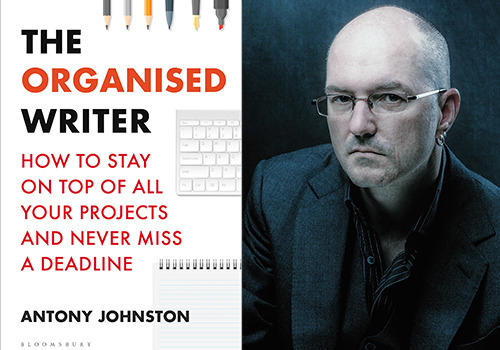
Do you have any writing resolutions for the new year? Sometimes having a fresh start can help you develop better ways to keep track of your ideas and stories. Today, bestselling author Antony Johnston is here to give you some tips on how to be a more organized writer:
I’ve yet to meet a writer – myself included! – who doesn’t wish they were better organized. So as we all look forward to making a fresh start in the new year, here are four tips to help you stay on track.
This is probably the hardest thing to commit to, especially right now with so many of us still at home and juggling that work-family-life balance. But it’s also the most rewarding and effective thing a writer can do.
Find a regular slot in which you can write alone and uninterrupted. That might be half an hour before everyone wakes up, an hour after evening dinner, or something else. The precise time doesn’t matter so much as making a daily commitment, because when you write every day even small amounts quickly build up. Oh, you can only write 250 words per day? Well, after nine months you’ll have finished a 70,000-word novel. And if you can write more than that… well, even math-averse authors can figure that one out.
2. Write With a ‘Clean Mind’I always advocate making writing the first thing you do after waking – before email, social media, phone calls, etc. Those things distract us, polluting our minds with the real world. It’s difficult to let your imagination run free when your subconscious is composing email replies or getting angry about something on Twitter. Writing first means you can work with a ‘clean mind’, free of distraction.
Of course, if you have a day job and/or family commitments this can be difficult. Try to fulfill those duties and then take a short break to cleanse them from your mind – walk the dog, go for a run, maybe listen to a podcast. Don’t spend that time online! Do something that lets your mind relax, so when you come to write all you’re thinking about is your manuscript.
3. Write to a DeadlineIf you’ve taken part in NaNoWriMo, you know the value of a deadline. It focuses your mind on getting those words down every day and finishing a manuscript on time. Give yourself that same benefit by setting personal deadlines, no matter the project.
Only you can know what a reasonable deadline is, and even experienced writers like myself occasionally get it wrong! But any deadline is better than none, and if you know how much you can reliably write every day (see #1) you can use that to figure out a schedule. It’s amazing how having that date on your calendar focuses your mind – even when you put it there yourself.
4. Write Fast, Revise LaterRemember: no matter how rough your draft is, you can always revise it. But first you must have a draft to revise – because it’s much easier to see what needs to change when you can see the complete story.
So don’t get bogged down searching for the perfect phrase or worrying about continuity details. Instead, power through to the end of the draft – because then you can go back and find that perfect phrase, or revise all those details, at your leisure.
Don’t sit around waiting for inspiration; just put your head down and write.
Antony Johnston is a New York Times bestselling author whose work includes books, screenplays, graphic novels, and video games. The hit Charlize Theron movie Atomic Blonde was based on his graphic novel, his Brigitte Sharp cyber-spy thrillers are critically acclaimed, and his productivity guide The Organised Writer has helped authors all over the world take control of their workload. He also hosts the podcast Writing And Breathing.
Find him online: https://twitter.com/AntonyJohnston
Author photo credit: Chad Michael Ward
January 13, 2021
What Does Your Writing Journey Look Like?

Everyone has their own reasons for how they write, as well as their own voice and style. Take a glimpse into how NaNo Participant Audrey Shulman begins her drafts.
The NaNoWriMo finishers out there (congratulations) may disagree with me on this one, but for me, it’s the journey and not the destination, that makes writing worthwhile. As someone guilty of having at least three stories in the works at any time, the phrase “I’m finished” is usually reserved for meals.
The creative process in the build up to even starting a writing project is different for everyone, but for me it means weeks of my new characters acting out scene after scene in my mind as I walk the dog or take the train to work. Rather than mapping out a specific journey to the destination, I leisurely linger/stroll/meander around at the bottom of the mountain.
Developing the setting, character progression and overall arc of the story should probably be a priority at this point, but instead I am lost in an overly specific rendition of an interaction between two characters, which plays on repeat until it occurs to me to write it down. In my journey I have chosen the easy route: it may not get me to the mountaintop fastest, but it has plenty of picnic stops and shady trees.
From there my characters seem to write their own destinies, until the going gets tough and the mountain gets steep. At this point, maybe about 5k, I might admit that I’d quite like to reach that fabled destination that is finishing a first draft. By taking the easy start, I now have a steep, uphill climb. But is there a better feeling than finally figuring out how a situation is going to resolve itself, how two characters are going to meet or exactly how that dialogue should end?
Those moments of success, when we experience a breakthrough and things start to figure themselves out, or even just replacing that adverb that has been annoying you, can each be their own destination, that deserve to be enjoyed and celebrated. When climbing an actual mountain, it’s unlikely you’d wait until the very top to stop and look around, chances are you’re pausing to look back at how far you’ve come, to rest and have some food and congratulate yourself on your progress.
Even as I write this my 25k draft is patiently waiting to be finished, so maybe I’ll change my mind when I reach my mountaintop. But it’s important to take a second to look back at how far you’ve come, rather than focusing on how far you still have left to go. It’s the journey, not the destination, so enjoy it and keep climbing!

Audrey is a copywriter at a marketing agency in London and volunteers at her local library each summer to support the UK’s Summer Reading Challenge. She’s previously worked as a primary school teacher and loves the way books make adventures accessible. She has been writing stories for a long time but has yet to be a NaNoWriMo finisher. Find her on LinkedIn.
Photo Courtesy of Matt Howard via Unsplash.
January 12, 2021
The “Now What?” Months Are Here!
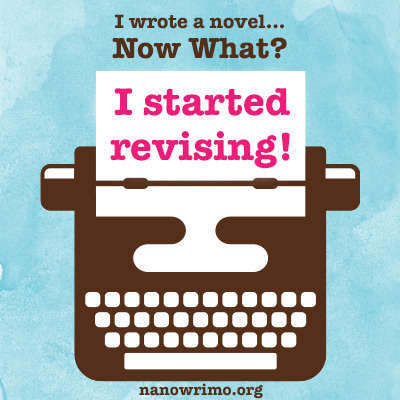
Every new year comes with new opportunities, and never have we needed a fresh start more than after the past year. If you wrote a first draft of a novel last November, now might be the perfect time to revise.
This January and February, during NaNoWriMo’s “I Wrote A Novel… Now What?” Months, we’re focusing on revision and publishing: providing tips from published authors, editors, and agents to help you reach even greater creative heights. Are you ready?
Check out our “Now What?” resources!Sign our official revision pledge to help take the next step with your novel.
Plus, join in a “Now What?” event to chat with other writers about your revision process:
New Year Writing Resolutions Virtual Write-In: Wednesday, January 13, 1:00 PM PST — During this livestream, NaNoWriMo Program Director Marya Brennan will share some writing prompts to help you get back into the swing of things. Plus, you can chat with other Wrimos from around the world!Revision and Submission Webcast with Minh Lê: Tuesday, January 19 at 3:00 PM PST — Join author Minh Lê to discuss revision advice, submission tips, and the many twists and turns a story takes from first to final draft. Co-presented with We Need Diverse Books, this webcast is especially geared towards young people applying for the Penguin Random House Creative Writing Awards, but will be useful to anyone interested in revising and submitting their work.
Journey of a Book Webcast: Friday, January 22 at 4:00 p.m. PST —Join NaNoWriMo, our sponsor Sisters in Crime, and a panel of special guests to discuss the journey of a book—from idea to draft to published work!
How to Copyedit Webcast with ProWritingAid: Wednesday, January 27 at 2:00 PM PST — Turn your rough first draft into a clean, clear, publish-ready manuscript! Editing professionals and NaNoWriMo sponsor ProWritingAid are here to help you polish your story. They’ll be sharing a presentation on copyediting best practices and will answer your writing and editing questions live!
Critiques and Feedback Forum: Looking for some input as you polish your story? There are tons of writers on the NaNoWriMo forums who can give you useful advice and feedback!
Chris Baty's Blog
- Chris Baty's profile
- 63 followers



